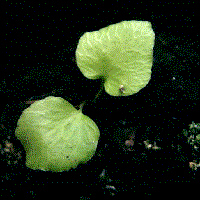Ferns belong to an ancient group of plants that developed before flowering plants, and they do not produce flowers and therefore do not produce seed. Ferns reproduce by means of spores, a dust-like substance produced in capsules called sori on the underside of the fern leaf, or frond. Different types of ferns have their spores in different patterns.
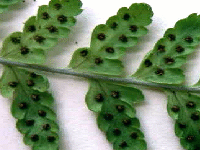 |
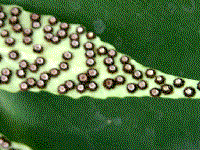 |
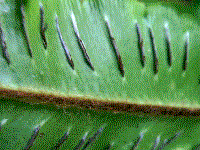 |
| When the spores are ripe, they are released from the capsules. You can collect them either by cutting the frond and placing it in a paper bag, or putting a piece of paper under the frond. The dust-like spores will fall onto the paper and can be collected. In this photo, the shape of the leaf can be seen in the spores. | 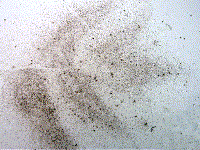 |
|
To sow the spores, scatter them over the surface of damp compost. It is helpful to sterilise the surface of the compost first by pouring boiling water over it. The most important thing to ensure successful germination of the spores is to keep the compost moist and cool. Either enclose the pot in a plastic bag or keep it in a closed propagator. It can take several weeks or months for the first signs of life.
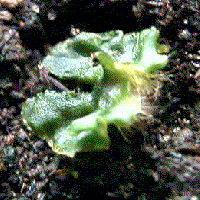 |
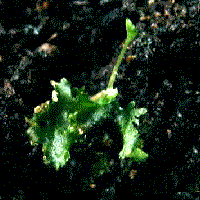 |
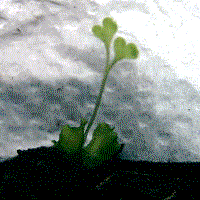 |
The spores develop into a thin frilly green 'leaf' called a prothallus that seems to have tiny hairy roots. This produces the male and female reproductive parts, and it is vital that the surface of the potting medium remains moist at this stage, as the male cells swim to the female cells and combine to produce the new plant.
The fertilised female egg eventually grows a new leaf from the prothallus. The new leaves are very delicate, and bear no resemblance to the adult leaf.
Even when the new leaves are stronger and the plant is big enough to transplant, the stems are still brittle, and the leaves are unlike those of the adult fern. This is Cyrtomium falcatum, and it is only after several more leaves have been produced that they will look like those of the mature fern.
